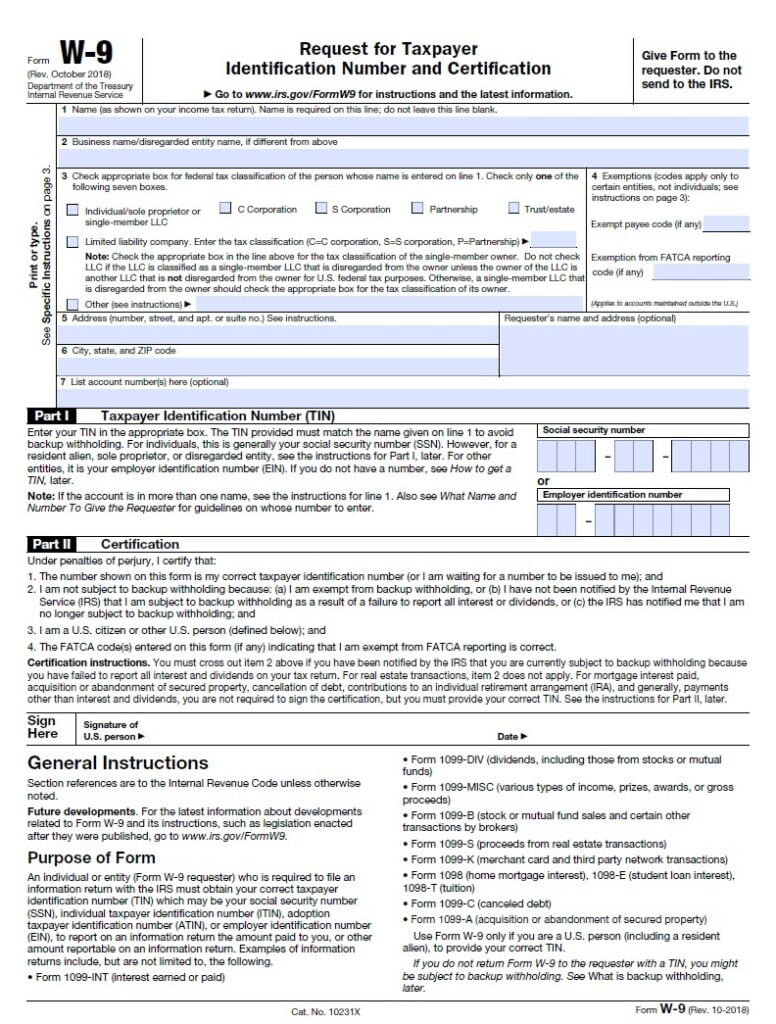As a freelancer or independent contractor, you likely have to deal with various financial and tax obligations. One critical document that you need to manage is the W-9 Form from the Internal Revenue Service (IRS). The W-9 is essential for both you and the businesses or individuals who pay you for your services. In this article, we will discuss the importance of the W-9 Form, its purpose, and how to properly manage it as a freelancer or independent contractor.

Understanding the W-9 Form
The W-9 Form, officially known as the “Request for Taxpayer Identification Number and Certification,” is used by businesses to collect essential tax-related information from individuals or entities they pay for services. As a freelancer or independent contractor, you are required to provide a completed W-9 Form to your clients before receiving payments. The form will request your Social Security Number (SSN) or Employer Identification Number (EIN), along with your full name and address.
Why is the W-9 Form Important?
The W-9 Form is crucial for both you and your clients for tax reporting purposes. It allows your clients to report the income they’ve paid you to the IRS. Furthermore, the information provided on the W-9 Form helps your clients determine if they need to withhold any taxes from your payments. In most cases, freelancers and independent contractors do not have taxes withheld from their payments, and they are responsible for paying their taxes directly to the IRS.
Managing Your W-9 Forms as a Freelancer or Independent Contractor
- Keep your information updated: Ensure that your W-9 Form has your current legal name, address, and taxpayer identification number. Any changes in your personal or business information should be reflected in the form. Providing inaccurate information can lead to tax reporting issues and potential penalties.
- Track your clients: Maintain a list of clients you’ve worked with and those who have requested your W-9 Form. This list will help you stay organized and ensure you have provided the necessary information to all relevant parties.
- Store W-9 Forms securely: As the W-9 Form contains sensitive information, it is essential to store the forms securely, whether in digital or physical format. Protect your digital forms with strong passwords and encryption and keep physical forms in a safe and locked location.
- Provide W-9 Forms promptly: When starting a new project with a client, provide your completed W-9 Form as soon as possible. This proactive approach will demonstrate your professionalism and help avoid any delays in payment processing.
- Know when to submit a new W-9 Form: If your personal or business information changes, or if a client requests a new form, be prepared to submit an updated W-9 Form promptly. Regularly review your W-9 Forms to ensure the information is accurate and up to date.
- Consult a tax professional: If you have questions or concerns about your W-9 Forms or tax obligations as a freelancer or independent contractor, consider consulting a tax professional. They can provide guidance on the best practices for managing your tax documents and ensuring you meet all IRS requirements.
Properly managing your W9 Forms is a crucial aspect of being a successful freelancer or independent contractor. By staying organized, promptly providing W-9 Forms to your clients, and ensuring your information is accurate, you can avoid potential tax complications and maintain a positive professional relationship with your clients. Don’t hesitate to consult a tax professional if you need assistance with your tax-related responsibilities.